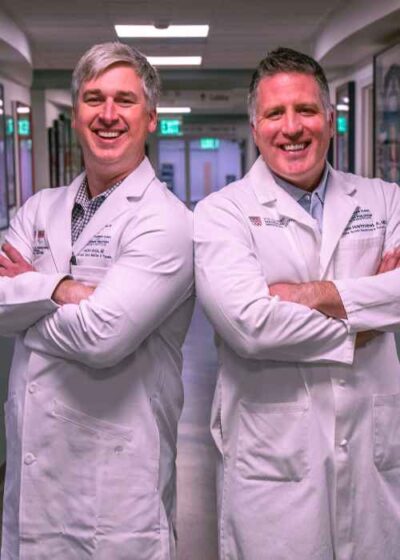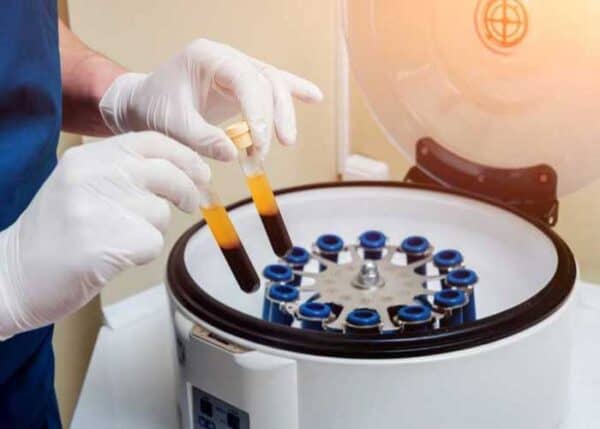Platelet Rich Plasma (PRP) Doctors
Platelet Rich Plasma (PRP) is a nutrient-rich blood component that is vital for injury repair. PRP is often used in conjunction with various orthopedic procedures and has been found to be useful in helping certain injuries heal quicker. Platelet rich plasma specialists, Doctors Thomas Haytmanek and Jonathon Backus offer this specialized treatment for qualifying patients from Vail, Colorado, and the surrounding Eagle, Vail, and Gore Mountain Ranges who could benefit from PRP or platelet rich plasma. Contact The Steadman Clinic’s Sports Foot and Ankle team today!

What is platelet-rich plasma?
The blood supply circulating throughout the body contains many small components vital for injury repair. The majority of the circulating fluid is a mixture of red blood cells, white blood cells, and platelets floating in a medium known as plasma. Platelets are small packets made from bone marrow cells that house many proteins called growth factors. These growth factors aid in injury repair and work together with coagulation factors to initiate blood clotting.
To create PRP, peripheral blood is harvested and spun down using a centrifuge. This process removes the less biologically active materials, concentrating the platelets as much as 5 to 10 times within the plasma. This newer regenerative treatment focuses on decreasing pain and inflammation at the injury site, encouraging tissue and ligament repair. Evidence from current research has shown platelet-rich plasma to be a promising cost-effective alternative to surgery.

How does platelet-rich plasma work?
When the wall of a blood vessel breaks, the clotting process is initiated to quickly repair the vascular injury. During primary hemostasis, coagulation factors activate the platelets to form a temporary tissue plug. While the exact mechanism of how platelet-rich plasma works is not yet understood, researchers have identified an acceleration in the healing process by activating the patient’s own cells to provide the necessary elements for new tissue formation. The doctors at Sports Foot and Ankle specialize in treatment with platelet-rich plasma for patients from Vail, Colorado, and the surrounding Eagle, Vail, and Gore Mountain Ranges.
How is the platelet-rich plasma treatment prepared?
Platelet-rich plasma preparation begins with drawing the patient’s blood. The blood is placed in a centrifuge that rapidly spins to separate the platelets from the other blood components. The layer of platelets is then separated from the other cells and fluid. This platelet-rich plasma preparation can now be injected directly into the site of injury.
Is treatment with platelet-rich plasma effective for foot and ankle treatments?
While the effectiveness of platelet-rich plasma for sports injuries in the foot and ankle is still being evaluated through clinical and laboratory studies, it has been found to be a promising cost-effective alternative for some chronic joint, tendon, and ligament conditions. There is a significant amount of literature documenting a considerable reduction in osteoarthritis symptoms in patients treated with platelet-rich plasma. Additional scientific studies have shown improvement in certain tendon conditions when treated with platelet-rich plasma. The following factors are evaluated in determining the efficacy of platelet-rich plasma therapy:
- The patient’s overall health (i.e., age, medical history, and activity level)
- The injury site
- Acute injury vs chronic injury
- Current symptoms
- The cellular composition of the prepared platelet-rich plasma
What conditions can be treated with platelet-rich plasma?
The ideal candidates for platelet-rich plasma therapy are patients who have previously failed conservative treatment measures and do not wish to undergo surgical intervention. The effectiveness of platelet-rich plasma is currently being studied in a number of musculoskeletal conditions, both acute and chronic, including:
- Pain and instability in various joints including the foot and ankle
- Muscle sprains and strains
- Chronic pain conditions
- Osteoarthritis
- Chronic tendon injuries
- Osteochondral injuries of the talus and tibia
- Achilles tendonitis
- Plantar fasciitis